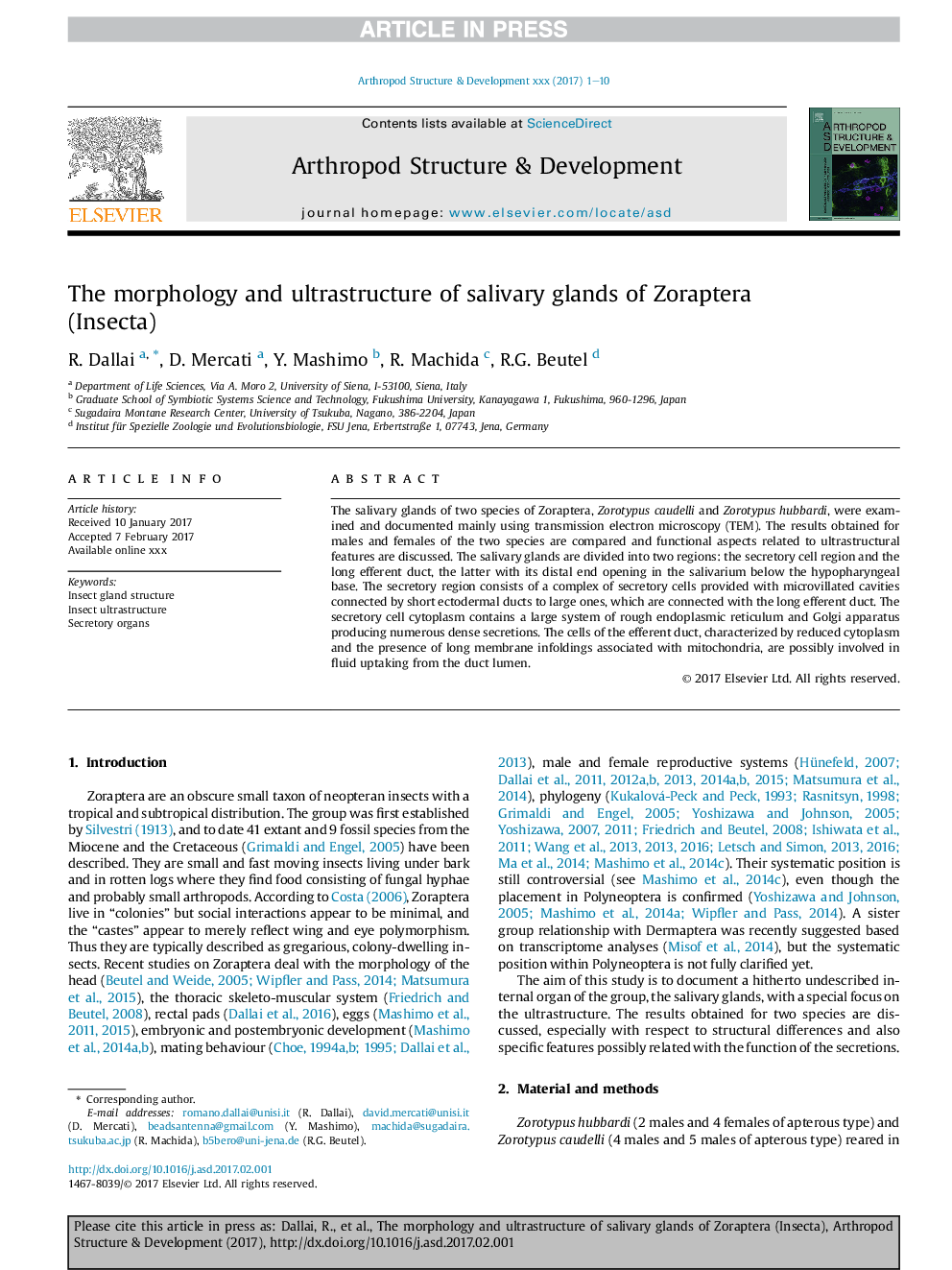| Article ID | Journal | Published Year | Pages | File Type |
|---|---|---|---|---|
| 5585030 | Arthropod Structure & Development | 2017 | 10 Pages |
Abstract
The salivary glands of two species of Zoraptera, Zorotypus caudelli and Zorotypus hubbardi, were examined and documented mainly using transmission electron microscopy (TEM). The results obtained for males and females of the two species are compared and functional aspects related to ultrastructural features are discussed. The salivary glands are divided into two regions: the secretory cell region and the long efferent duct, the latter with its distal end opening in the salivarium below the hypopharyngeal base. The secretory region consists of a complex of secretory cells provided with microvillated cavities connected by short ectodermal ducts to large ones, which are connected with the long efferent duct. The secretory cell cytoplasm contains a large system of rough endoplasmic reticulum and Golgi apparatus producing numerous dense secretions. The cells of the efferent duct, characterized by reduced cytoplasm and the presence of long membrane infoldings associated with mitochondria, are possibly involved in fluid uptaking from the duct lumen.
Keywords
Related Topics
Life Sciences
Agricultural and Biological Sciences
Insect Science
Authors
R. Dallai, D. Mercati, Y. Mashimo, R. Machida, R.G. Beutel,
